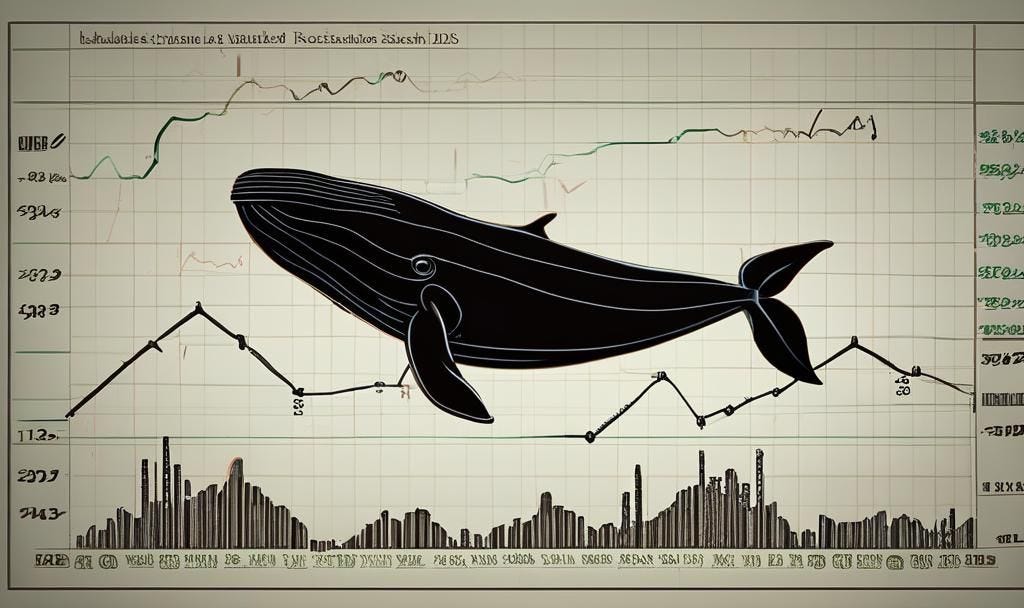Weekly Recap
Latest research on quant investing and trading
Welcome to this week’s collection of links featuring the latest research on quant investing as well as useful resources. Below, you'll find a curated list, with each title linking to the source for more information.
Bonds
Call Me Maybe: Corporate Bond Prices Upon Missed Call Opportunities (Ivashchenko and Rockinger)
The authors study how corporate bond prices change when companies unexpectedly delay calling back their debt, documenting inefficiencies in the bond market.
Fixed-income Investing Primer (Dubofsky)
This comprehensive guide offers practical advice for individual investors on navigating the world of fixed-income securities and investment strategies.
Commodities
Novel and old news sentiment in commodity futures markets (Chi et al.)
Old news sentiment has a stronger impact on commodity returns leading to overreactions, possibly due to investor inattention.
Equity
Distorted Beliefs and Asset Prices (Malkhozov et al.)
This paper explores how investors' distorted beliefs affect stock market risk premiums and helps explain deviations from theoretical asset pricing models.
Trade Size Based Order Imbalance and the Cross-Section of Stock Returns (Lesmond)
The relation between order imbalance and future stock returns underwent a structural shift around 2000, switching signs from positive to negative for small and medium-sized orders.
Firm-level Investor Sentiment and Stock Returns (Wu et al.)
The authors present a new measure of stock-specific sentiment which predicts the cross-section of stock returns.
Closing the Stock Market: Why Keep Investors from Trading? (Taylor)
This is a comprehensive financial history paper studying stock-market closures around periods of wars and geopolitical turmoil, finding that closing stock markets in general hurt investors.
Analyst-Peer Alumni Tie (Liu and Pang)
Stock analysts with large alumni networks make more accurate forecasts, especially in certain contexts and demographic groups.
Overnight Return Momentum and the Timing of Trading Volume (Perreten and Wallmeier)
The authors explore how the overnight return in stock markets depends on intraday patterns in trading volume.
Economic Moats and Stock Performance: Is Warren Buffett wrong? (Haggard)
Firms with strong competitive advantages tend to outperform those with little or no competitive advantage, though they do not necessarily outperform the market.
Machine Learning and Large Language Models
The Value of Economic Constraints in Boosting Equity Premium Prediction (Vincent)
Incorporating economic constraints into machine learning models can boost out-of-sample Sharpe ratios.
Regime switching forecasting for cryptocurrencies (Agakishiev et al.)
The authors explore a combination of a regime-switching model and reinforcement learning for timing Bitcoin, with mixed results out-of-sample.
What is the Deal?: Predicting M&A Outcomes with Machine Learning (Campbell et al.)
Using machine learning to forecast the post-deal returns of M&A deals generates a profit, buying (shorting) the most (least) valuable deals.
Forecasting Company Fundamentals (Divo et al.)
The authors evaluate the ability of a range of models to predict corporate fundamentals finding deep learning models to outperform, performing in line with analyst expectations.
Time-Causal VAE: Robust Financial Time Series Generator (Acciaio et al.)
The paper presents an autoencoder model with causal constraints, generating realistic financial time series data.
Statistical Arbitrage
Statistical Arbitrage via Single-View and Multi-View Spectral Clustering on Mixed Frequency Data (Leung)
The method of clustering assets in statistical arbitrage strategies matters more for profitability than the actual trading signal.
Blogs
The Value of Stop-Loss Strategies (QuantSeeker)
How to build a macro trading strategy (with open-source Python) (Macrosynergy)
Statistical Arbitrage (Quantitativo)
GitHub
Applied Machine Learning (Cornell CS5785)
Medium
A New Way to Detect Causality in Time-Series: Interview with Alejandro Rodriguez Dominguez (Microprediction)
An Introduction to Transformers in ML (Part 2) (Franco)
Is Your Sharpe Ratio Lying to You? Meet the Probabilistic Sharpe Ratio (QuantPy)
Podcasts
Making Money from Market Chaos | Inside the Volatility World with Kris Sidial (Excess Returns)
Ep. 1313: Steve Burns Interview with Michael Covel on Trend Following Radio (Michael Covel)
Davidson Heath: How Are Index Funds Affecting Financial Markets and Corporate Governance? (Rational Reminder)
Last Week’s Most Popular Links
How to Improve Commodity Momentum Using Intra-Market Correlation (Vojtko and Pauchlyová)
Machine Learning in Portfolio Decisions (Guidolin et al.)
Relative Monetary Policy and Exchange Rates (Karau)
Disclaimer: This newsletter is for informational and educational purposes only and should not be construed as investment advice. The author does not endorse any specific securities or investments mentioned. While information is gathered from sources believed to be reliable, there is no guarantee of its accuracy, completeness, or correctness.
This content does not offer personalized financial, legal, or investment advice and may not be suitable for your individual circumstances. Investing carries risks, and past performance does not guarantee future results. The author and affiliates may hold positions in securities discussed without prior notification.
The author is not affiliated with, sponsored by, or endorsed by any of the companies, organizations, or entities mentioned in this newsletter. Any references to specific companies or entities are for informational purposes only.
The brief summaries and descriptions of research papers and articles provided in this newsletter are the author's own interpretations of the findings and content. These summaries should not be considered as definitive or comprehensive representations of the original works. Readers are encouraged to refer to the original sources for complete and authoritative information.
This newsletter contains links to external websites and resources. The inclusion of these links does not imply endorsement of the content, products, services, or views expressed on these third-party sites. The author is not responsible for the accuracy, legality, or content of these external sites or for that of subsequent links. Users click on these links at their own risk.


